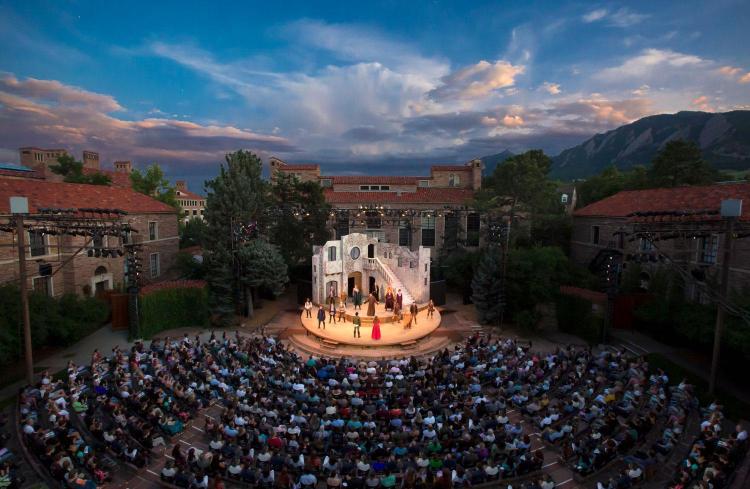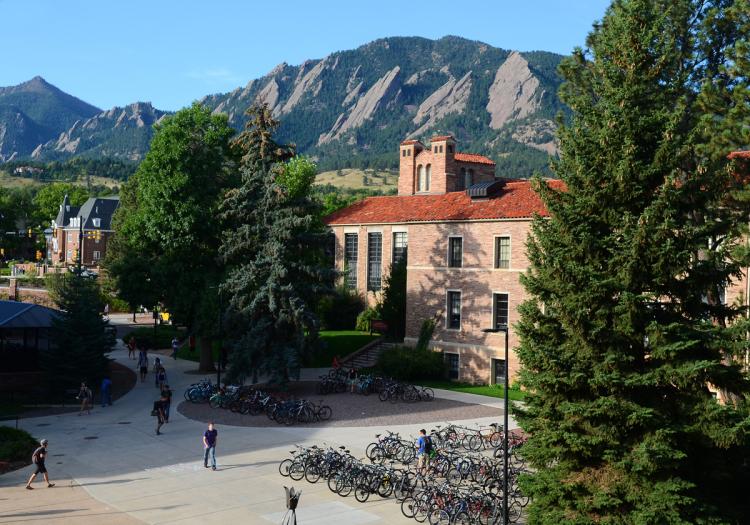After 100 years of heavy use, Hellems gets OK for major renovation
After long-awaited project gets state legislative OK, campus planners aim to revamp the historic site for a bright and long future
In 1921, Albert Einstein won the Nobel Prize in Physics, Canadian scientists discovered insulin, and the University of Colorado finished construction on its liberal arts building—the first built in the university’s trademark Tuscan Vernacular style.
This year, state lawmakers approved the first phase of funding to renovate the building, now called Hellems Arts and Sciences. The renovation is planned to take over four years to complete.
While the building has changed relatively little in 100 years, much else has changed dramatically.
In 1921, CU Boulder campus enrolled about 2,100 students, and the city of Boulder itself had 11,000 residents.
Today, Boulder is almost 10 times larger, and the student population is 15 times bigger. There are more students majoring in one discipline, psychology, than were at the entire university in 1921.

At the top of the page: Hellems Arts and Sciences, shown here in the 1930s, was the first building on campus built using the trademark Tuscan Vernacular style (A.A. Paddock Collection : University of Colorado, Boulder). Above: Mary Rippon Theatre, built between the wings of Hellems, is home to the Colorado Shakespeare Festival (seen here).
Hellems is showing its age. Besides the original 1921 structure, Hellems includes two wings built in 1937, along with the Mary Rippon Outdoor Theatre, home to the beloved Colorado Shakespeare Festival. The 95,000-square-foot facility needs health and safety improvements, accessibility improvements and energy-efficiency upgrades that will help the building attain a LEED Gold rating.
The Hellems renovation will have big implications: About half of all first-year students take a class in Hellems and 85% of CU Boulder undergraduates take at least one class there by the time they graduate. In fall 2018, 40 departments from four colleges taught courses in Hellems.
Crucially, campus planners emphasize, the Hellems renovation aims to maximize the building’s ability to instill a sense of inclusion and to foster student success.
CU Boulder officials have long sought state funding for the Hellems renovation, first making the request in the 2003-04 fiscal year. Eighteen years later, and with the advocacy of Edie Hooton, a state legislator representing Boulder County, Colorado, lawmakers approved the funding for the first phase of the $89.5 million project in May 2021. The university is awaiting funding approval for the final phases of construction.
Jan Becker, an architect with Facilities Management Campus Planning, calls the renovation a “clear sky opportunity,” steeped in history and promising for the future. “I think it's super interesting that this building really was a pivotal building almost 100 years ago, from a historic and site point of view, in terms of establishing CU Boulder as a campus,” she says.
Zack Tupper, assistant dean of infrastructure for the College of Arts and Sciences, says campus planners have been working hard to ensure that the revamped teaching spaces are optimized for students of today.
“We think of our potential clients as K–12 students,” he observes.
Campus planning goals include the following:
- inclusive, visionary, student-focused learning and collaboration spaces;
- flexibility for the future;
- preservation and modernization for the next 100 years;
- diversity, equity and inclusion throughout; and
- health, wellness and community.
Campus planners also aim to provide 20 to 30 classrooms that will have simple user-friendly AV/tech setups to provide flexibility and consistency for 30-50 students each; flexible classroom furniture to encourage creative teaching styles; and community shared spaces to create a hub of connection.

Hellems in the present day.
The Mary Rippon Theatre will also be renovated. The Shakespeare garden and significant trees around the theatre will be protected and retained.
The Colorado Shakespeare Festival, one of the oldest Shakespeare companies in the United States, has performed there since 1958. The venue bears the name of Mary Rippon, the first woman to teach at a state university and the first female professor at CU Boulder.
Hellems is named after Fred Burton Renney Hellems, dean of the College of Arts and Sciences from 1899 to 1929. The building is part of the campus’s Norlin Quadrangle Historic District, and was the first building designed by architect Charles Klauder in the now-iconic University of Colorado Tuscan Vernacular style.
Hellems has been a place where generations of students discovered and deepened the joy of learning the humanities. One story among thousands comes from Bronson Hilliard, who earned a degree in history at CU Boulder in 1986.
Hilliard, now senior director of academic communications at CU Boulder, recalls a class on the history of Germany since 1846, taught by the “late and truly immortal Robert Pois, whose lectures alternated from humor to pathos in equal proportion in a kind of narrative symphony,” Hilliard recalls.
One example of Pois’ humor was his statement that, “Every year I get a final paper explaining to me how Hitler could have won the war if he’d only had more gasoline. Don’t waste your time with a paper like that. I can tell you that General Motors alone could have beaten the Germans.”
As Hilliard recalls, Pois ended the course with a poignant reading of Delmore Schwartz’s “Time is the Fire.”
Each minute bursts in the burning room,
The great globe reels in the solar fire,
Spinning the trivial and unique away.
(How all things flash! How all things flare!)
What am I now that I was then?
May memory restore again and again
The smallest color of the smallest day:
Time is the school in which we learn,
Time is the fire in which we burn.
Hillard concludes: “That room, in Hellems, changed my life.”

